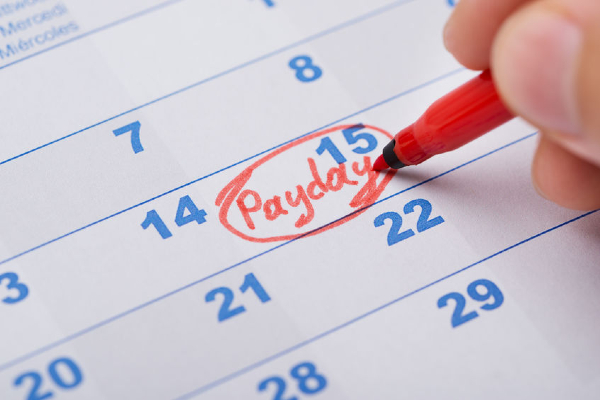(This article is Part 1 of the ‘Mortgage Loan Application and The Documents You Need’ series. Click here to read Part 2 [Self-Employed] and Part 3 [Non-Standard Documents]).
Taking the step to purchase a property is a huge milestone, so congratulations! In no time, you’ll be having fun decorating your new home, meeting the neighbours, exploring your surroundings, and basking in the comfort of your private sanctuary.
But wait a minute! Before you put on your shoes to go property hunting and look for the right property to call home, you’ll need to prepare some things in advance, like your income documents for a mortgage.
When it comes to purchasing a home, applying for a housing loan is the wisest decision. Even the rich do it! There are upfront costs that need to be covered before sealing the deal, so a housing loan will help a lot.
These include a 10% down payment of the property price, SPA fees, stamp duty, legal fees, and more.
To proceed with your housing loan application and propel you one step further to owning your dream home, you’ll need to compile and submit some standard documents to the bank to prove you are financially stable and able to take on the repayments.
For an employed person, the documentation is relatively simple. However, certain things still need to be taken into account to ensure a smooth and straightforward application process.
It also helps to reduce the number of questions raised by the banks, so make sure you’ve got everything sorted out!
1) Payslip
1a) Allowances
A payslip is the first piece of documentation you’ll need to show the bank, so they know how much you earn in a month.
Most employees have a basic pay, which is a nett amount like RM3,000. They would also sometimes have an allowance in the form of a fixed or variable amount.
|
Fixed Allowance
|
Variable Allowance
|
|
Paid monthly and you receive the same amount every month.
|
Paid monthly and you receive different amounts every month.
|
|
Types of allowance: Travel, mobile, etc.
|
Types of allowance: Overtime.
|
|
Example: RM500/month for travel every month.
|
Example: RM1,000 for January, RM5,000 for February, RM7,000 for March.
|
In simpler terms, a variable allowance is one that’s paid by measurement of completing a job, such as pro-rated overtime hours.
The amount can vary from one month to the other, and in some months, the allowance isn’t even paid. When it comes to your payslip, the one thing banks look at is consistency.
The more consistent your income is, especially the variable income, the higher the chances are that the banks will consider it for your loan.
PropertyGuru Tip
Consistency here refers to the amount earned every month and how much it fluctuates.
For example, if your allowance is RM1,000 for January, RM5,000 for February, and RM7,000 for March, this shows a fluctuation of the lowest amount (RM1,000) to the highest amount (RM7,000). That’s 7x the difference!
When one’s variable pay has such high fluctuations, the bank will likely ignore or not consider that income.
Most banks will only take in a certain percentage (50% to 80%) of the average amount on your payslip, though it depends on the particular bank’s guidelines.
What’s an acceptable variable income, then? A consistent one with little fluctuation; let’s say within the range of RM3,000 to RM5,000 every month.
That’s typically more acceptable, but some banks may still disregard the consistency, so it all boils down to the respective bank’s guidelines.
For variable income, you’ll need to prepare the payslips you’ve received within the last six months so that the banks will be able to get your average pay as accurately as possible. The more consistent, the better!
1b) Deductions
When you receive your payslip, you’ll notice monthly deductions such as EPF, SOCSO, and PCB (if your income has reached a taxable amount).
All these deductions are mandatory under Malaysia’s labour law, and the banks will do their due diligence by cross-checking them!
Issues arise when no EPF or SOCSO deductions have been recorded. Under the law, all employers must make EPF contributions on behalf of their employees.
For SOCSO, it’s almost the same, but banks will require clarification on non-SOCSO or EIS contributions.
Other deductions in your payslip may be deductions from bank loans paid on an instalment basis, and by reducing your salary.
In this case, your monthly salary will automatically deduct the instalment amount as a commitment, which results in lower nett pay. For example,
- Original nett monthly pay: RM3,500
- Monthly instalment amount: RM900
- Current nett monthly pay: RM3,500 – RM900 = RM2,600
It can be a setback because your take-home salary has reduced, but it’s not! By deducting the amount automatically from your monthly salary, you save the hassle of potentially forgetting to make repayments and accumulating debt instead.
However, in your CCRIS report, the bank will not know if the loan amount deducted from your pay is the same loan.
Hence, they may calculate it again on the same commitment, which means you’ll be paying double and possibly heading for financial trouble!
To keep yourself out of this sticky situation, be sure to keep the original agreement with your bank to prove that this facility is a salary deduction.
Only with the agreement can you prove that this salary deduction and the facility in CCRIS are the same to avoid being double-charged.
Another thing to take note of: Not all salary deductions will be reflected in your CCRIS report, including loans that are not from financial institutions.
Nevertheless, your CCRIS report is used as a benchmark to determine your financial health, so make sure it’s in tip-top shape.
2) EPF contribution
Expanding further on the Employees Provident Fund (EPF) contributions, banks will usually check the percentage of deduction.
Contributions used to be fixed at 11% until late 2020, where there was an announcement that the rates would be reduced to 9% beginning 2021.
All employers are required to follow the minimum percentage of EPF for both employee and employer contributions.
If the percentage of deduction is inconsistent, you can be sure that the banks will most definitely need to seek clarification.
Well, how can you ensure your EPF is being paid on time and accurately? Simple! You can check your own EPF contributions online.
It’s quite common for companies to be behind on EPF payments, not pay, or pay incorrect amounts. So, make sure you’ve got these all sorted out beforehand, as it can be a stumbling block when it comes to loan applications.
Besides that, it’s also good to know which portion of your pay contributes to your EPF! It’s usually derived from your basic salary, but subjective to other allowances or commission.
3) Bank statements
Bank statements are one of the most important documents banks will assess. For most of us, our salaries are credited directly into our bank account from our employers.
But what happens if you’re paid using alternative methods such as cheques, cash, or from another
party/company? Here are some tips on how to navigate these payment methods!
party/company? Here are some tips on how to navigate these payment methods!
- Credited by the company (normal method): Make sure the amount tallies with your payslip. If there are any differences, clarify with HR or Accounts immediately and amend it before submitting it to the bank for your loan application.
- Cash: Try to avoid this at all costs as it’s the #1 unverifiable source of income for most banks today, and most do not recognise cash payment as salary.
- Cheque: Keep a copy of your cheques as you may need them as proof. Make sure the crediting amount is exactly the same as the amount reflected in your payslip, and not a single cent different! Always try to bank-in to the same account. If not, you’ll need to prepare many different bank statements to reflect the cheque crediting, and it can be quite tedious.
- Third-party company: This typically happens in small companies where the company might use the employer’s personal account (usually a sole proprietor). The problem is that there will be issues with your loan application as it’s difficult to prove that this person is the owner of said company.
A bank statement shows the crediting account holder’s name, so always make sure it reflects the correct, registered name of your employer and not something else.
There may also be cases wherein large corporations, such as groups of companies, you may be hired under Company A but receive your monthly salary from company B, the parent company.
Technically it’s not wrong, but the bank may not see it that way as the names in the statement are different.
In that scenario, ask your HR for a letter to clarify the matter or submit your company’s website as proof that these two companies are under the same group of companies.
Other matters to pay attention to are allowances, commissions, and claims that may not be paid together with your monthly salary, but in a separate payment.
The same practice applies: Make sure the company issues you with a copy of proof of payment in the form of a voucher or slip.
The proof of payment must show what the payment is for with the exact figures that match your bank statement.
Even if you’re paid bi-weekly, there should be no issue if you comply with all the above and practice complete transparency with your financial records.
4) Copy of your I.C.
Last but not least, you need a copy of your I.C.! Make sure it’s a clear image of the front and back with your updated particulars. It’s always best to prepare an extra copy, so attach two copies just in case.
These standard documents are required if you’re looking to apply for a housing loan and successfully own your dream home.
However, if you’re self-employed and running your own business, or your focus is on freelancing and jobs in the gig economy, you may need to submit a different set of documents when applying for a housing loan.
———-
Expert insights contributed by Travis Tiu. You can reach out to him for your financial needs at +60 12-686 1202 or travis.choiceone@gmail.com
We are an established loan consultancy, assisting our clients in their best interest to secure various types of bank financing for both individuals and/or companies, be it property financing or business/company application. We have been in this industry for more than 10 years, and have been helping many of our clients solve their issues with bank financing. Feel free to contact us if you have any query regarding loan matters.
Disclaimer: The information is provided for general information only. PropertyGuru International (Malaysia) Sdn Bhd makes no representations or warranties in relation to the information, including but not limited to any representation or warranty as to the fitness for any particular purpose of the information to the fullest extent permitted by law. While every effort has been made to ensure that the information provided in this article is accurate, reliable, and complete as of the time of writing, the information provided in this article should not be relied upon to make any financial, investment, real estate or legal decisions. Additionally, the information should not substitute advice from a trained professional who can take into account your personal facts and circumstances, and we accept no liability if you use the information to form decisions.










